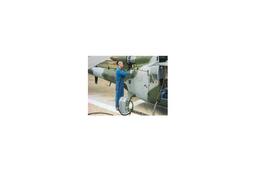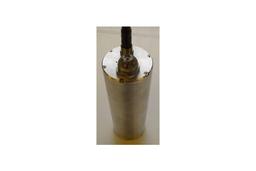



Marine and weather measuring equipment and Water quality automatic measuring equipment manufacturer
There is a growing requirement in deepwater applications for rigid flowlines to perform under high temperature/high pressure conditions. Large cyclic changes in temperature and pressure cause expansion of the flowline that can result in the occurence of lateral or upheaval buckling. Flowline system engineers therefore need to consider this potentially damaging phenomenon in their analysis and ways of mitigation.
An increasingly favourable mitigation solution is to establish spans of least resistance along the flowline to allow buckles to occur in known and controlled conditions. These sections of least resistance can be created via the addition of distributed buoyancy, designed to reduce the self weight of the flowline and friction against the seabed.
Our extensive buoyancy design experience encompasses the following:
ㆍOperation at depths up to 7000m
ㆍTower and S-Lay installation methods
ㆍClamping onto thermally insulated pipelines
ㆍAbrasion/load consideration during installation and service
ㆍBend radii/stiffness of pipe
ㆍ≈50°C (outer pipe) and storage temperature
ㆍA design life of 25 years and over
Buoyancy can be applied to the flowline in various forms, for example as half shell modules or as a direct cast-on coating. The decision as to which solution is best suited will depend on thorough consideration of the design parameters as follows:
ㆍBuoyancy requirement per metre and overall length of coverage
ㆍWater depth
ㆍFlowline characteristics - diameter MBR etc.
ㆍFlowline coating characteristics - thickness, contraction, creep, frictional coefficients
ㆍInstallation method - J-Lay or S-Lay
ㆍInstallation and service loads acting upon the buoyancy
ㆍIs the pipe reeled or jointed?
ㆍPipe installation speed
ㆍSeabed conditions - what does the abrasion resistant coating need to withstand?
ㆍNumber of buckling cycles
ㆍAllowable stiffness of flowline - buoyancy is designed to avoid adding unacceptable stiffness to riser
ㆍCorrosion protection
ㆍDesign life
Features
All of our Flowline Buoyancy systems utilise the following materials:
Syntactic Foam Core
The buoyancy elements of each system have a composite syntactic foam core. This material has three main components:
ㆍBase polymer
ㆍGlass microspheres
ㆍMacrospheres
The resulting material exhibits low water absorption and hydrostatic compression and is eminently suitable for extended subsea service. The syntactic foam has a nominal density which varies according to the specific water depth of the application.
Typical Densities:
| MSW (m) | Density (kg/m3) |
| 200 | 325 |
| 500 | 420 |
| 1000 | 480 |
| 2000 | 500 |
| 3000 | 530 |
Buoyancy skin
The syntactic foam core is protected from impact and abrasion using a proven skin system that we have developed on our Uraduct® cable and flowline protection products. The principal material components used are Glass Reinforced Plastics (GRP) and high grade polymers. These materials can be adapted to include marine growth and anti-foul protection if required.
Clamps
Holding the buoyancy in position on the flowline is critical to the overall flowline system performance. We have several clamping technologies available to use, their selection dependent on the installation and service conditions and the flowline coating properties. These range from carbon steel clamp arrangements, using elastic materials such as titanium, rubber and GRP for insulated flowlines where the outer diameter of the thermal coatings can vary significantly during service.
Metallic Components
Metallic components materials are selected for both their mechanical performance and resistance to corrosion. Typical materials are Inconel, Super Duplex, Titanium and CP protected carbon steel.
Our Flowline Buoyancy Systems use steel and aluminium mould tooling processes and are manufactured on our sites in Skelmersdale, UK and Houston, Texas, USA.
Testing
Testing and product development are at the heart of our material advances and product solutions. Whether this be within laboratories, full scale testing or ongoing research and development, testing is a major focal point for us. We believe that continuous and extensive testing is the only way to remain at the forefront of material development and continue to offer solutions that expand production possibilities and improve operating efficiency.
Testing for our Flowline Buoyancy systems encompasses the following:
ㆍMaterial testing
ㆍFit-up and assembly testing
ㆍLoad testing - axial, lateral and bending
ㆍHydrostatic testing
ㆍAbrasial testing
ㆍWeight and buoyancy measurement


































